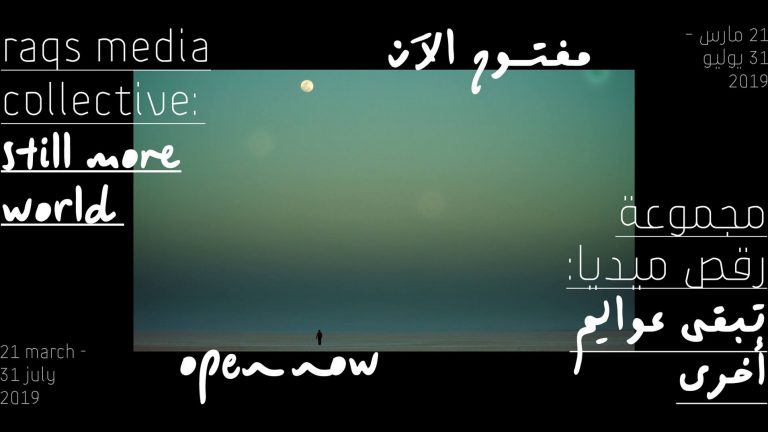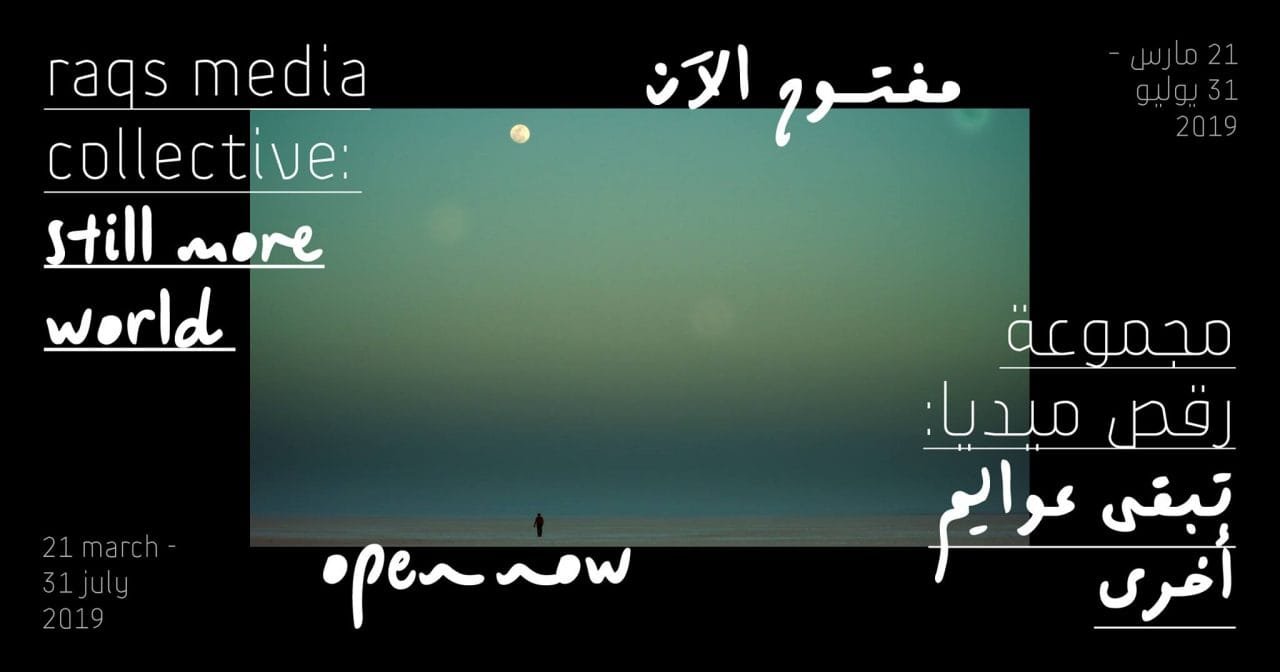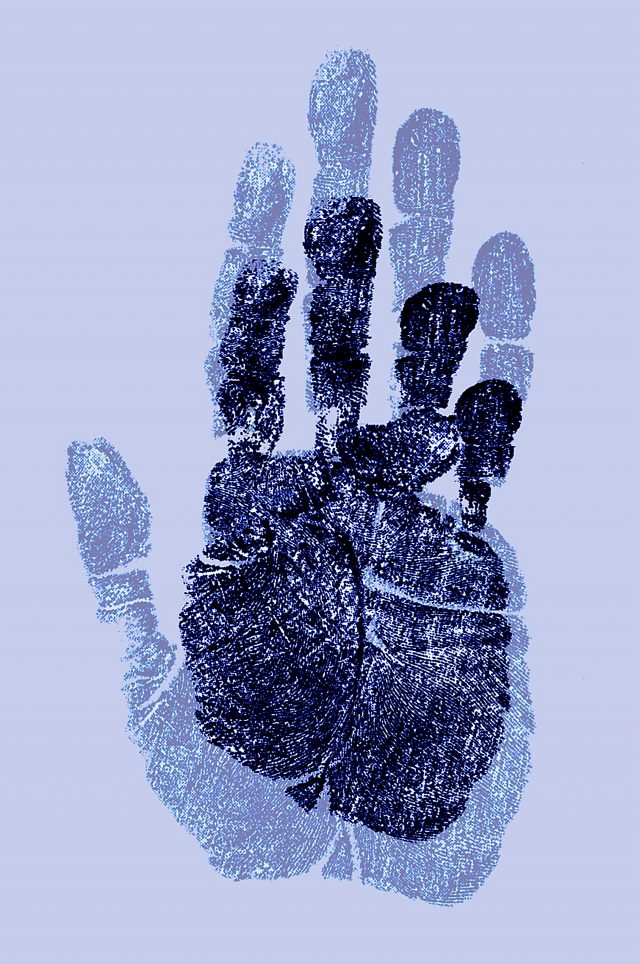Five Videos, LED screens, variable dimensions
Still More World, Mathaf Arab Museum of Modern Art | Doha (2019)
Dohas woven by Kabir,
Rahim sees them in the Stars
Raqs finds them everywhere,
in Doha and in Mars
This doha talks in shadow speech
Where words fail Raqs, let commas reach
When nothing else will do, then Raqs
Try a line or two of madness,
which is but sanity, redux
In the forenoon read a doha, and then proceed
Raqs, for time to flower,
each moment’s desiring is the seed
Raqs waits for times to ripen
Today’s loads, let tomorrow lighten.
The video works “Dohas for Doha” are illuminated proverbs that play with linguistics, light, and the transmission of knowledge. A doha is a poetic form that consists of four lines, a poetic technique popularized by the medieval Hindi poet and mystic Kabir. Changes to the sequences of words in these phrases creates multiple meanings and linguistic puns that refer to the city of Doha and Raqs in encoded, poetic messages, providing another layer to the word ‘doha’, which in Hindi means ‘double’.https://works.raqsmediacollective.net/index.php/2019/07/10/dohas-for-doha/
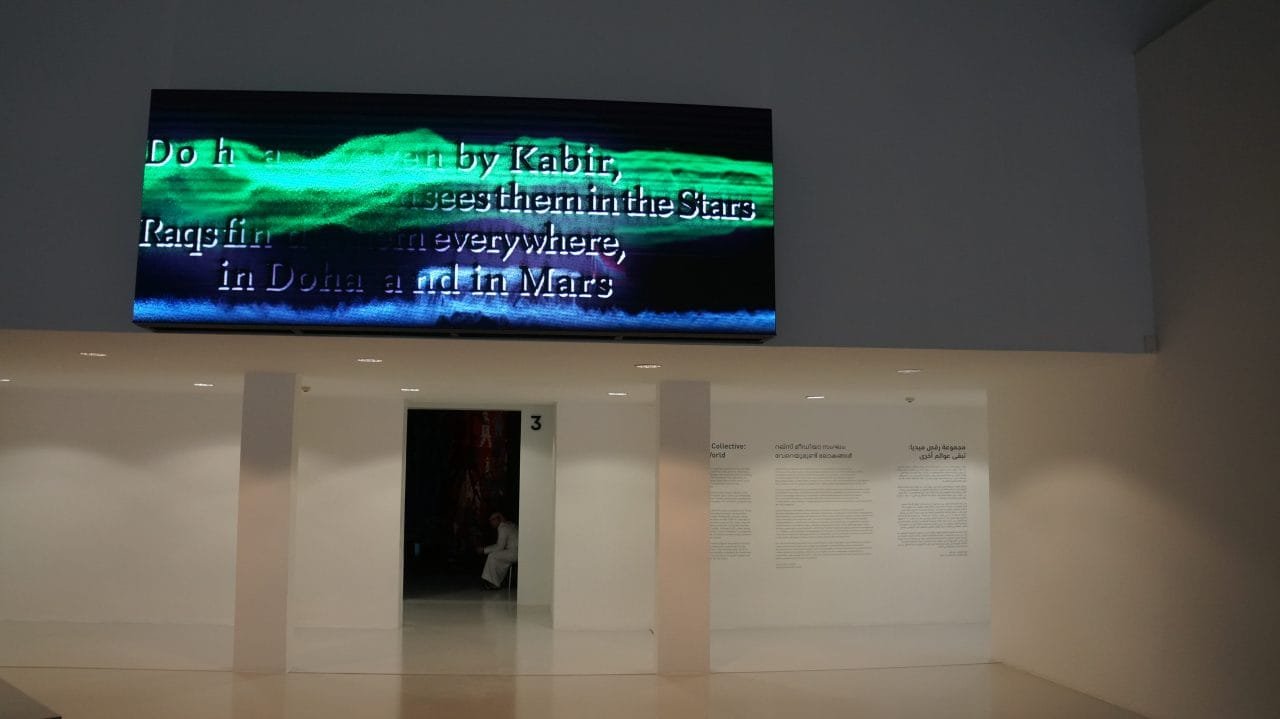
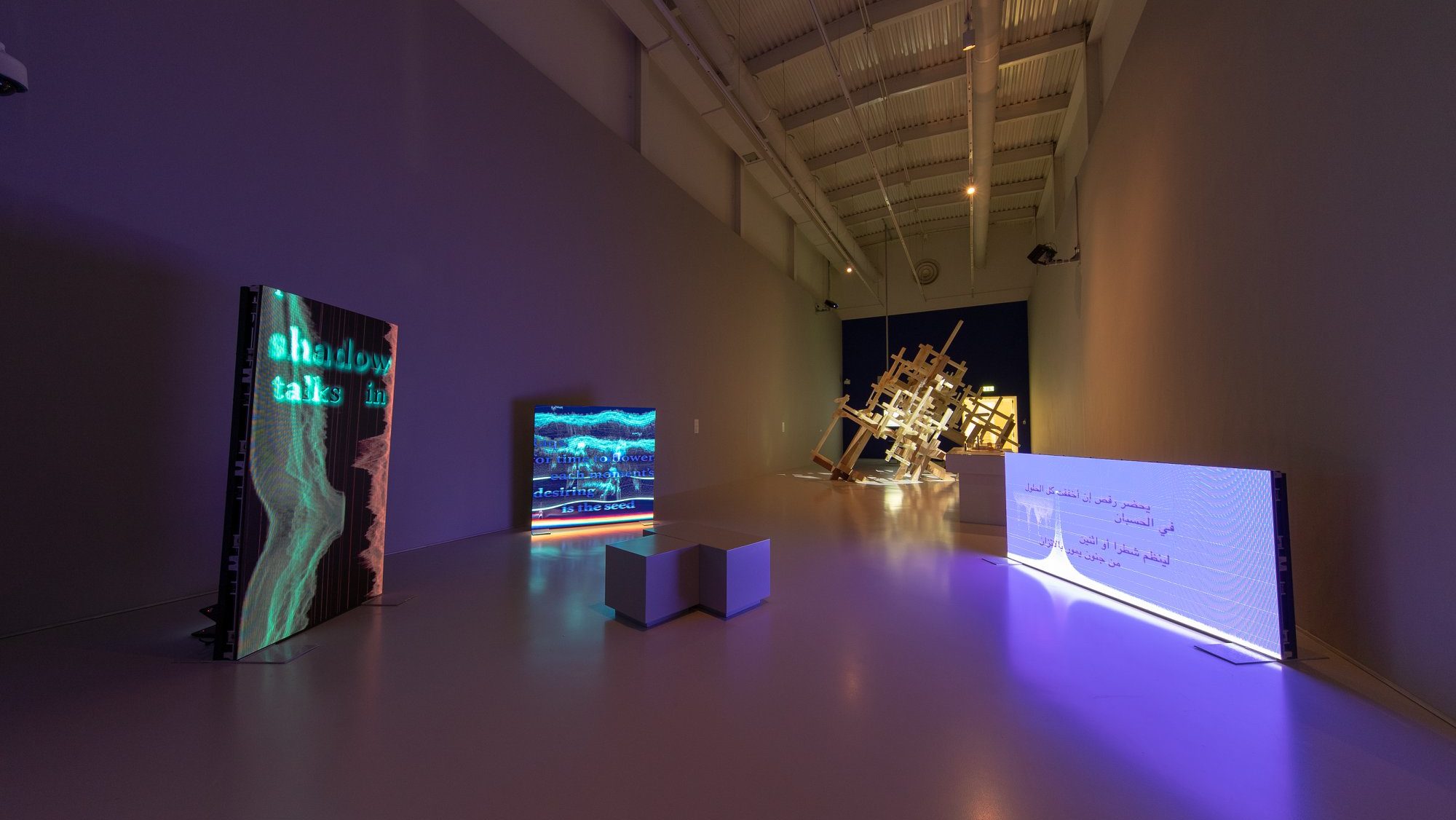
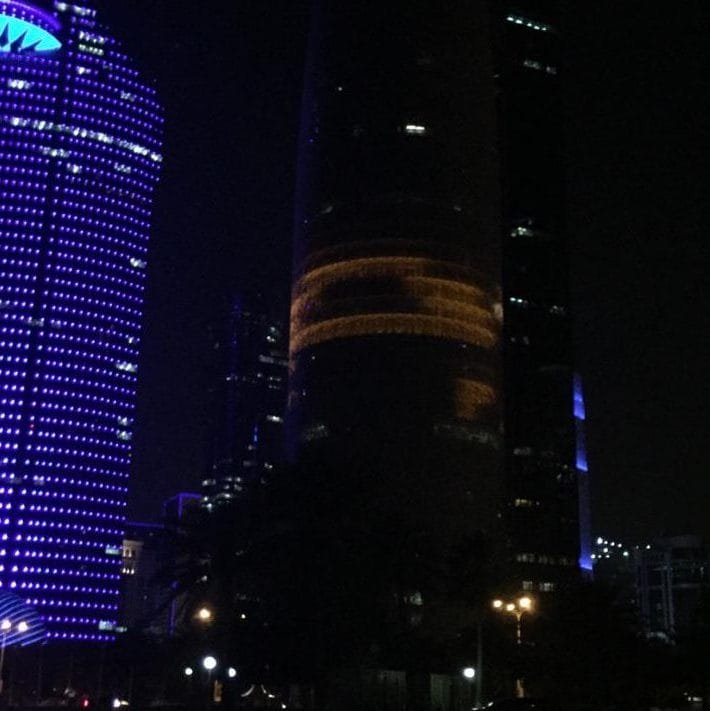
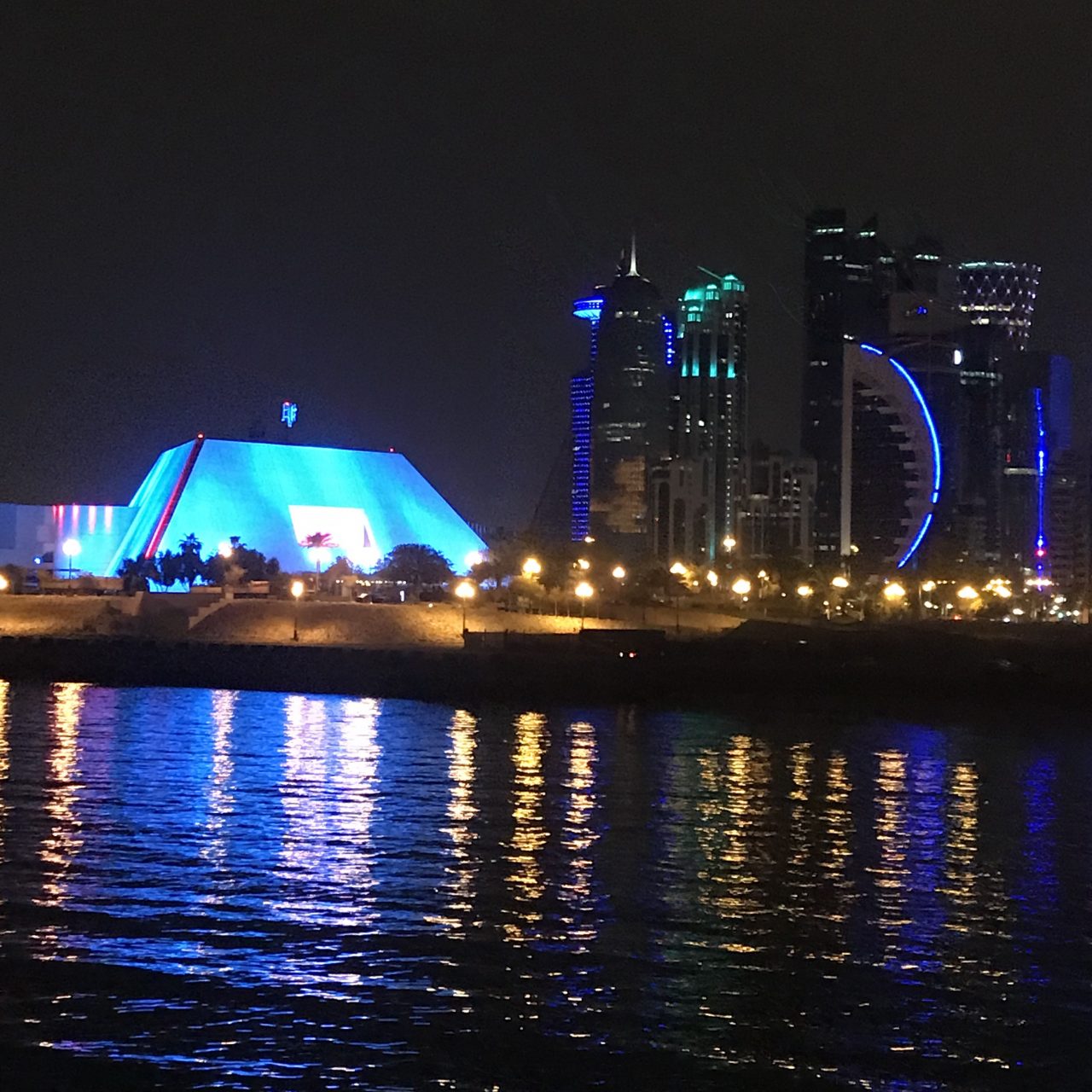
Provisions for Everybody
Installation: 3 Videos, large drawing print, 3 dhurrie banners, drawings on vinyl, found furniture
AV Festival, Newcastle (2018), ‘Still More World’ Mathaf: Arab Museum of Modern Art, Doha (2019)
“Coal Mine. Windmill. Sugarcane Field. Words. Pictures. Memes. It’s all about energy; everything is burning.”
“How not to write slow poisoning love letters to life?”, Raqs asks, as they collect provisions for everybody, straddle a planet rotating without permission, create an untimely calendar for the centuries from stone, coal, oil and windmills, and call up spectres of ordinariness to help forsake the comfort of readymade answers. What is on offer is a weave of thoughts found on the the road; as well as images, calculations, texts, textures and textiles which accompany and aid the the task of re-imagining the relation between potential and plenitude.
The video that lends its name to the installation, ‘Provisions for Everybody’, follows an itinerary on and off the trail of George Orwell. Traveling between Northern England, Eastern India, Myanmar, and Catalonia, Raqs find that one place shadows another, but one time never fits all. Raqs burrow under the earth, find a memorial to doubt ext to sugarcane fields, survey an open cast coal mine, study line dancing in a pit village, and fid everything ablaze from neolithic age to now. This provokes reflection on the relationship between time and energy, between burning and becoming fuel, via parables and lessons from pigs, donkeys and a taxidermied elephant. Raqs’ journey takes them to Orwell’s birthplace in Motihari, Bihar in Eastern India, where they consider his assertion – “to abolish class – (and caste)- distinctions means abolishing a part of yourself” in tandem with the Buddha’s celebration of doubt, which happened more than two millennia ago, in the same neighborhood. Meanwhile, daily revolutions are observed in silence against wide-open horizons in ‘A Planet Turns on its Axis Without Permission’, an accompanying video that offers a landscape as an allegorical proposition. Drawings of a series of ordinary objects that resonate with things noted and remarked upon in the reading of “The Road to Wigan Pier’ animate a third annotative video, titled, simply ’Things to Look at and Reconsider’. The window-drawing with its enmeshment of the human, animal and machinic is our new world-field. And so, woven textile and luminous text that that take the form of three suspended dhurries recalling the heraldry of historical labour movement banners are titled, ‘Let the Future Praise Us’.
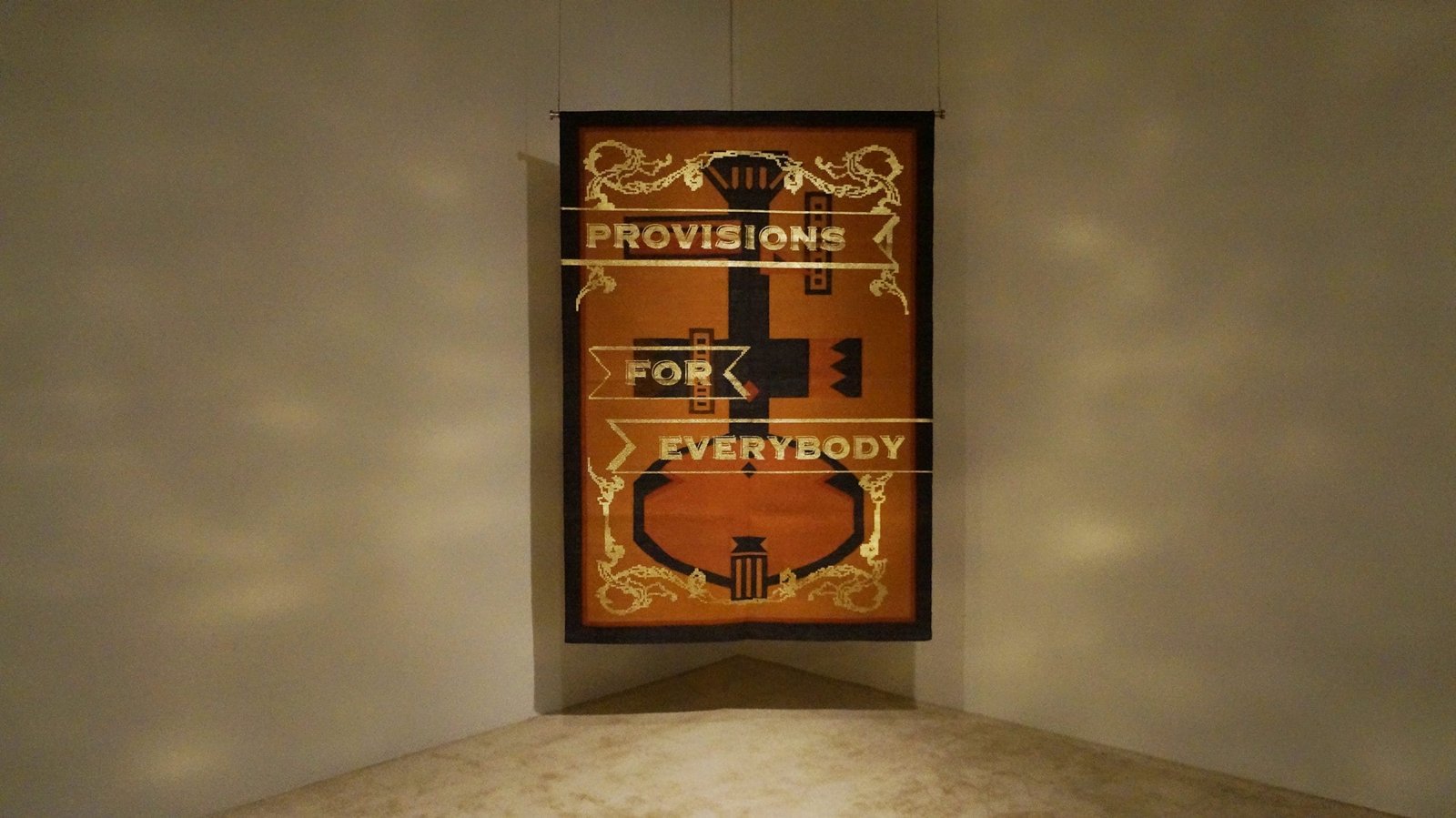
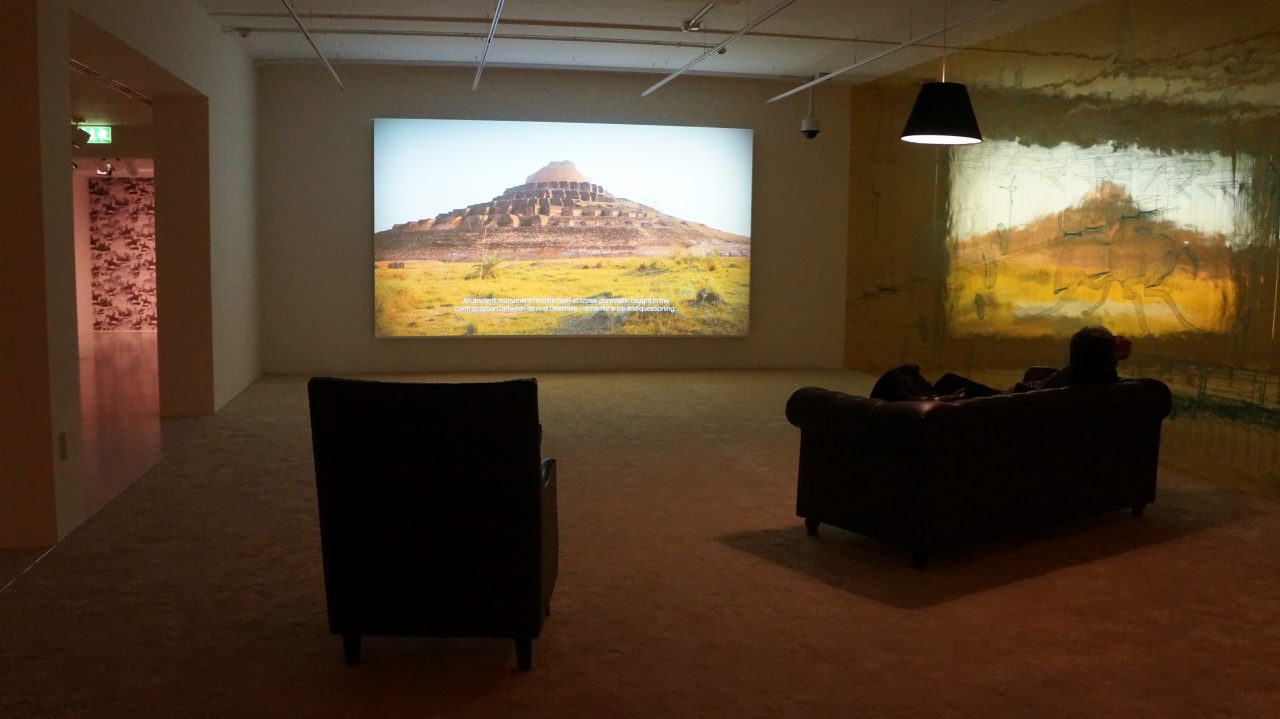
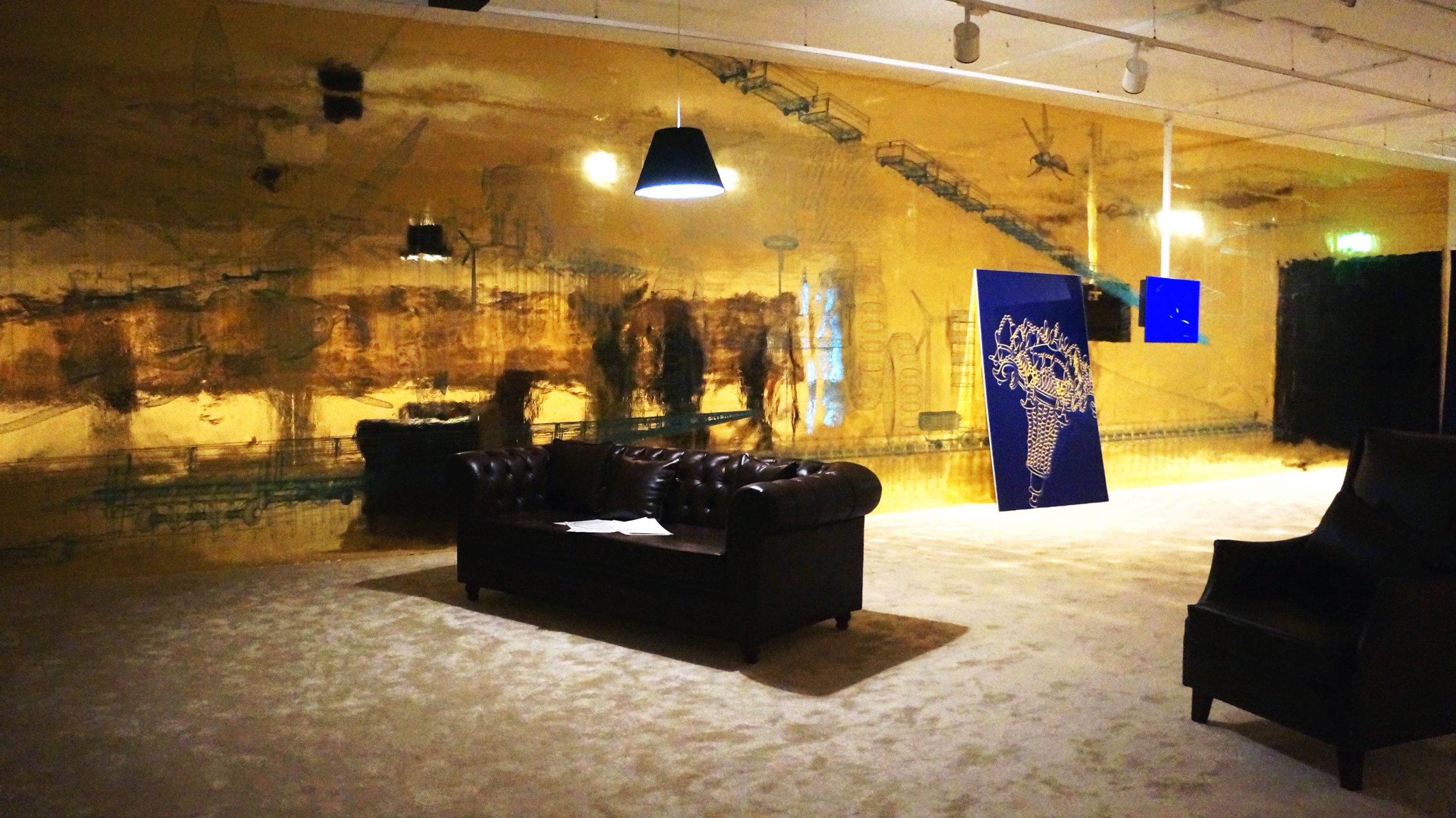
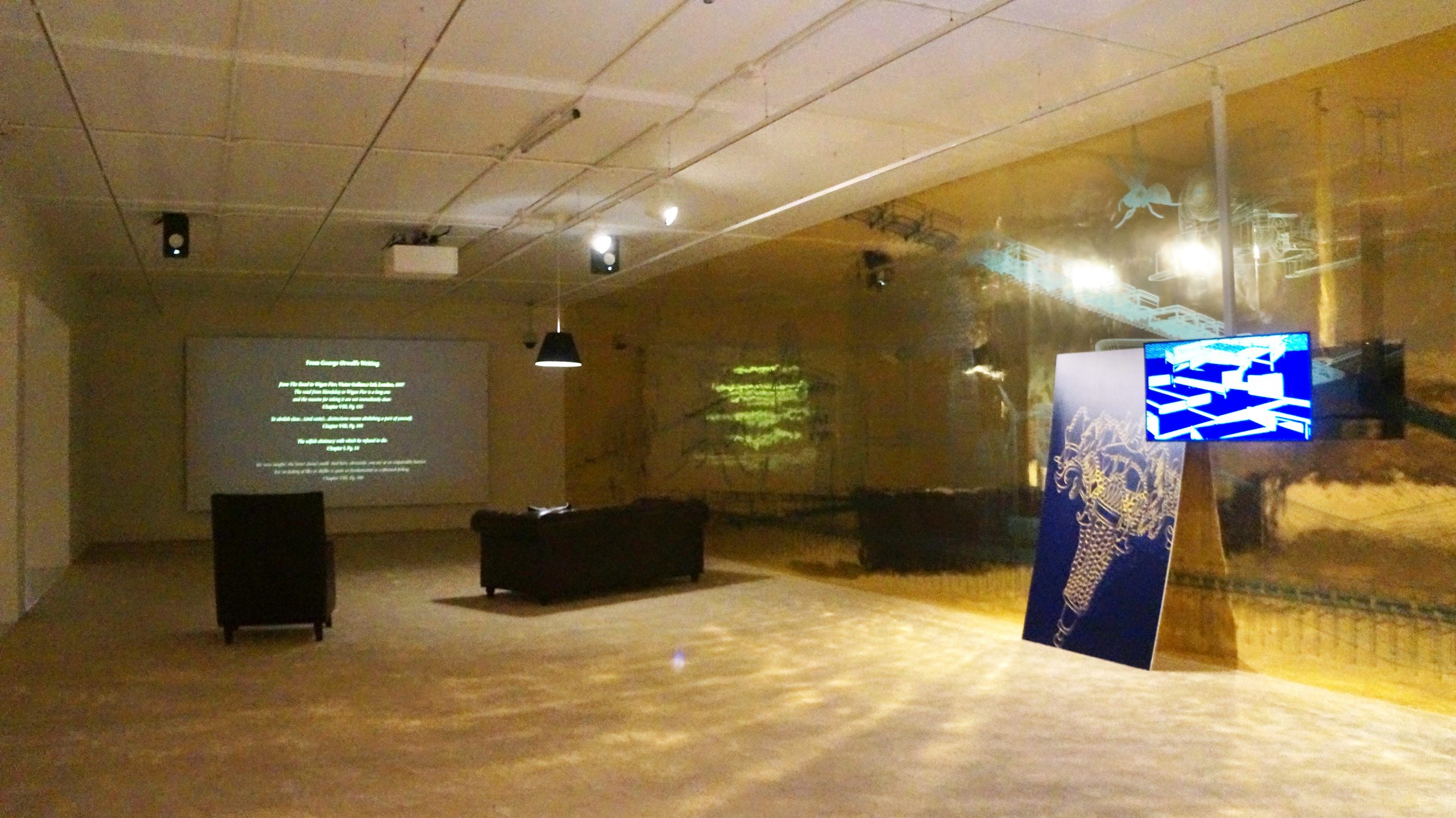
Provisions for Everybody
Single screen, Video, 50 minutes, Furniture
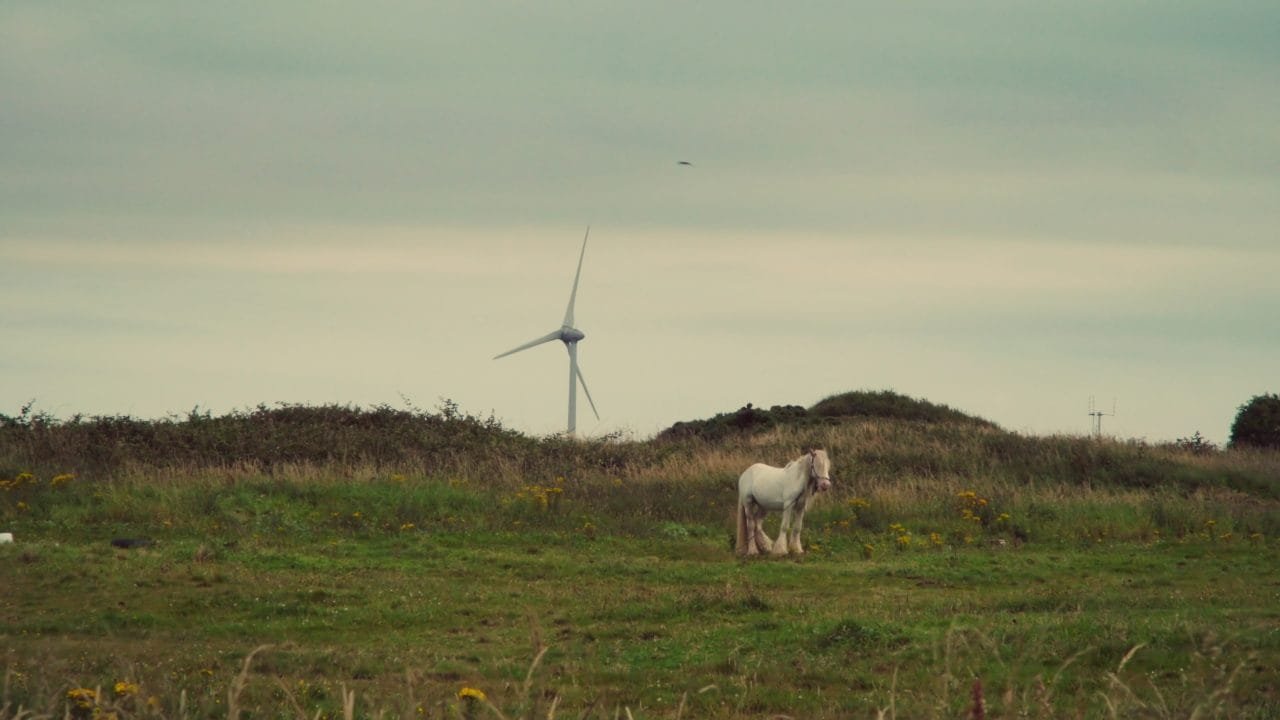
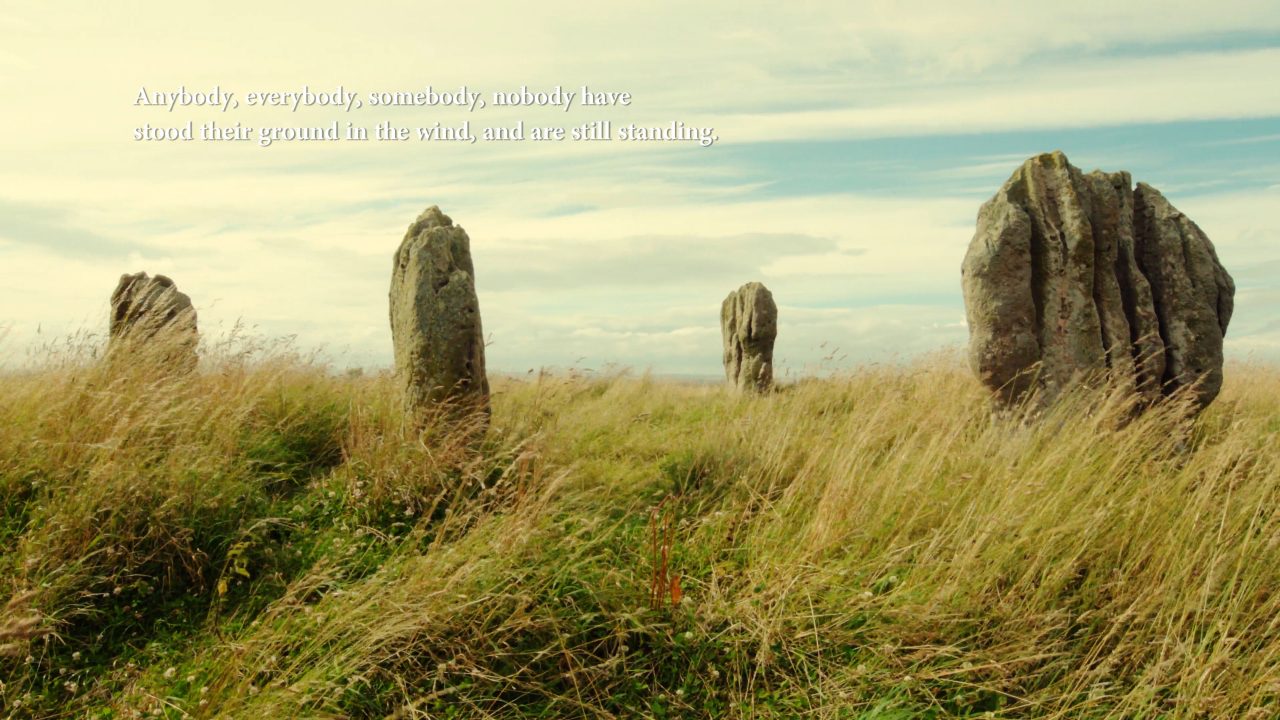
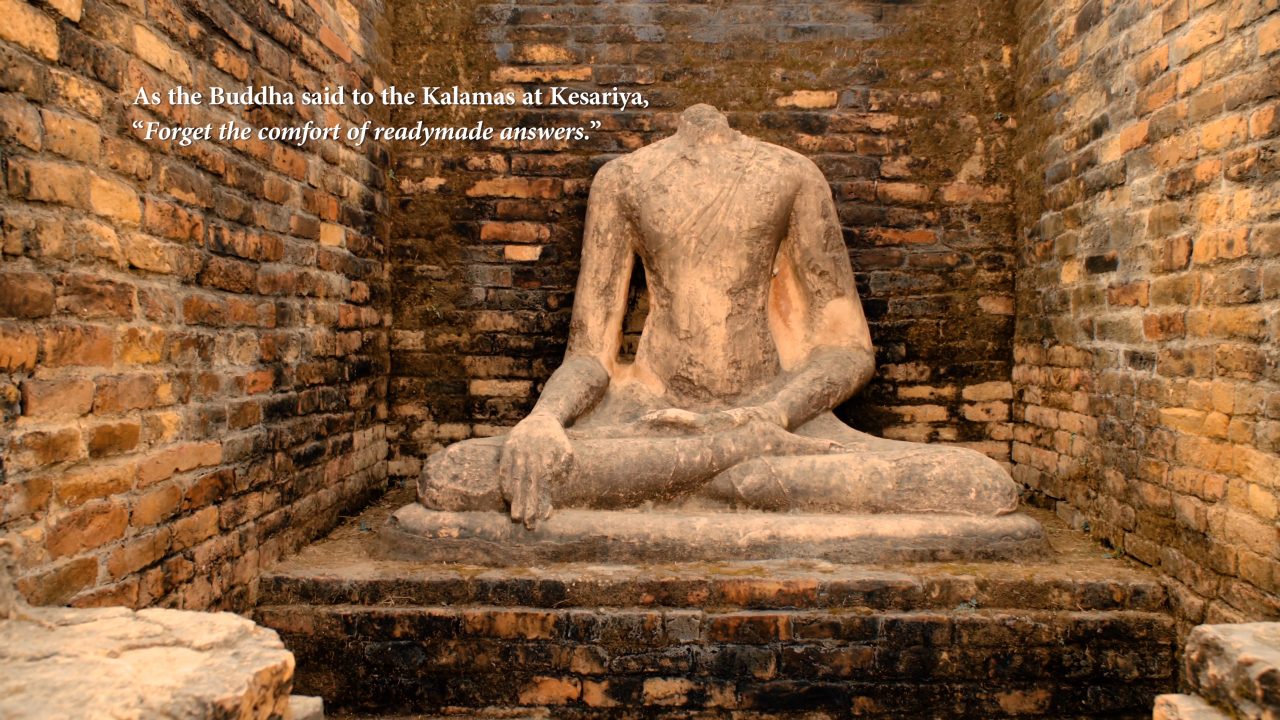
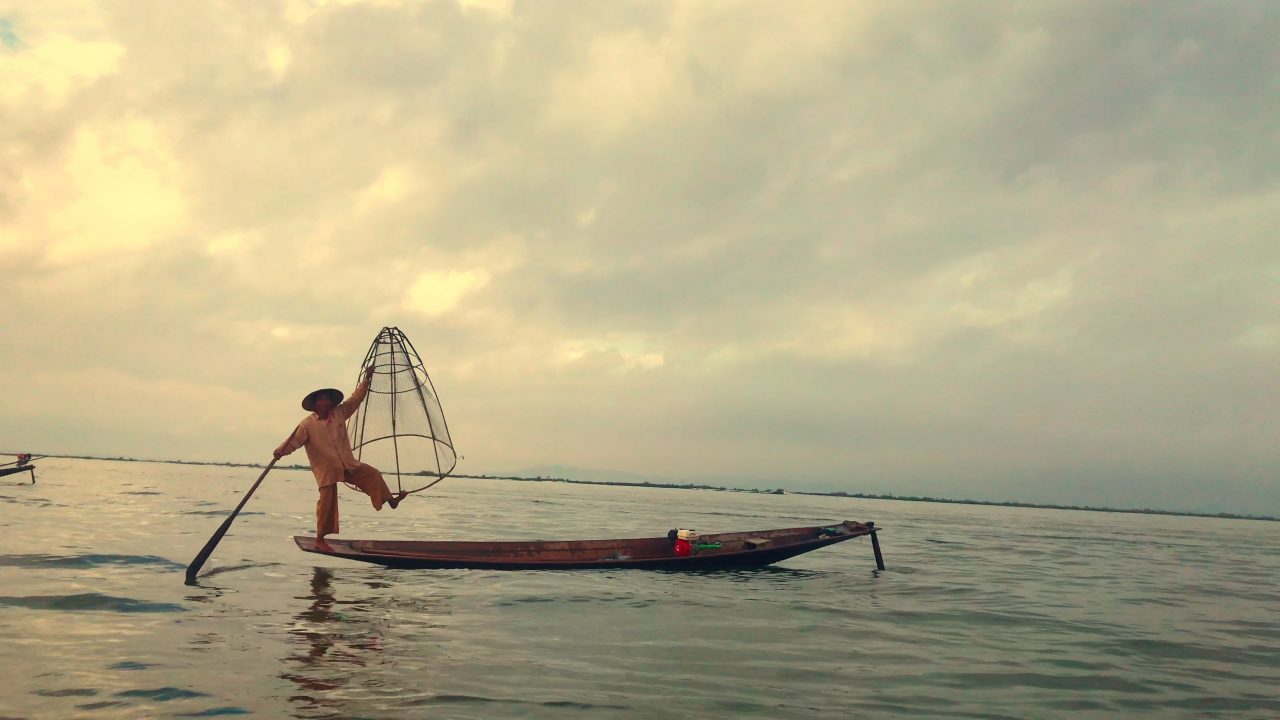
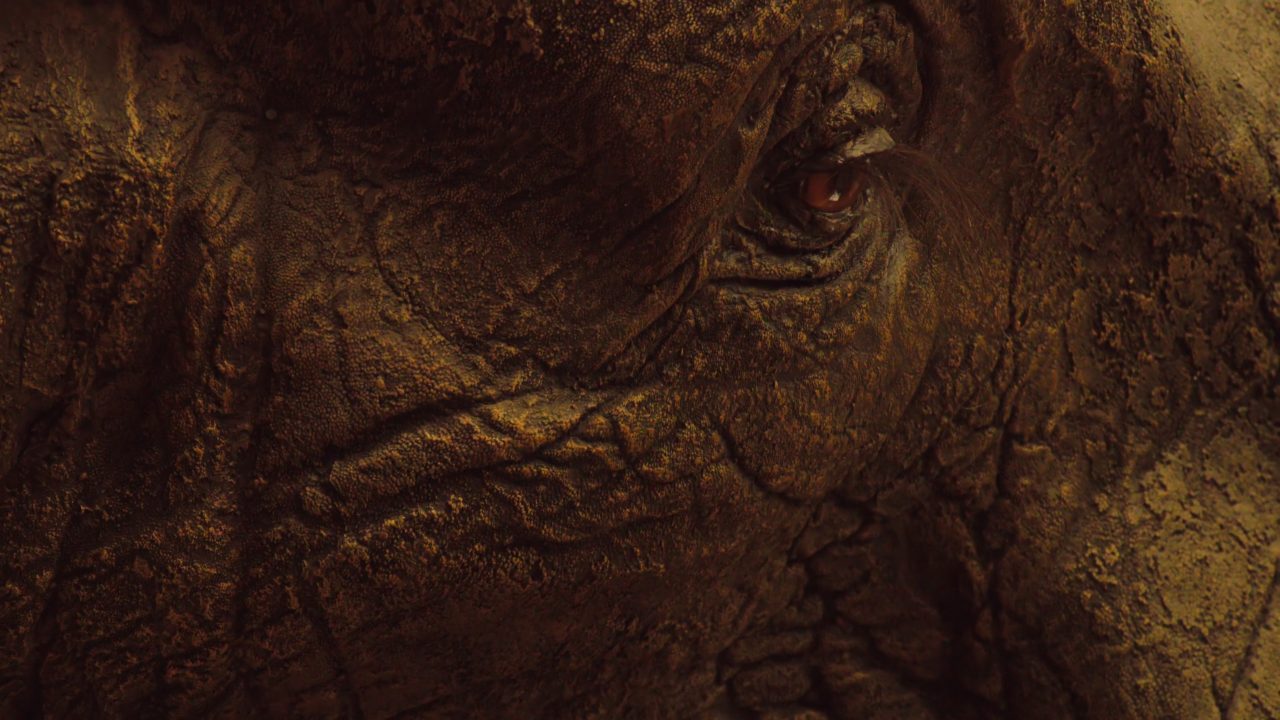

Alive, with Cerussite and Peppered Moth
3D printed PLA plastic, cast polyester resin, plywood and video projections
Architectural Collaborators: Palak Jhunjhunwala and Stratis Georgiu
Exhibition History: Whitworth, Manchester (2017) Mathaf, Doha (2018) Palais de Tokyo, Paris (2020)
This architectural installation speaks to the evolution of materials and living forms across alternative time epochs. The 3D printed structure represents crystal cerussite (which is the natural state of lead carbonate), while the light projections refer to the changing transparency of the peppered moth that occurred during the industrial revolution. In this period, the black and white peppered moth experienced industrial melanism, which means that its pigment became black for better camouflage in an environment polluted with soot residues. This temporary evolutionary strategy was reversed when pollution levels were reduced. In this work, these varied states of transformation explore the relationship between the changing invisible threads of ecology and compressed time. The work is now in the permanent collection of Mathaf, Doha.
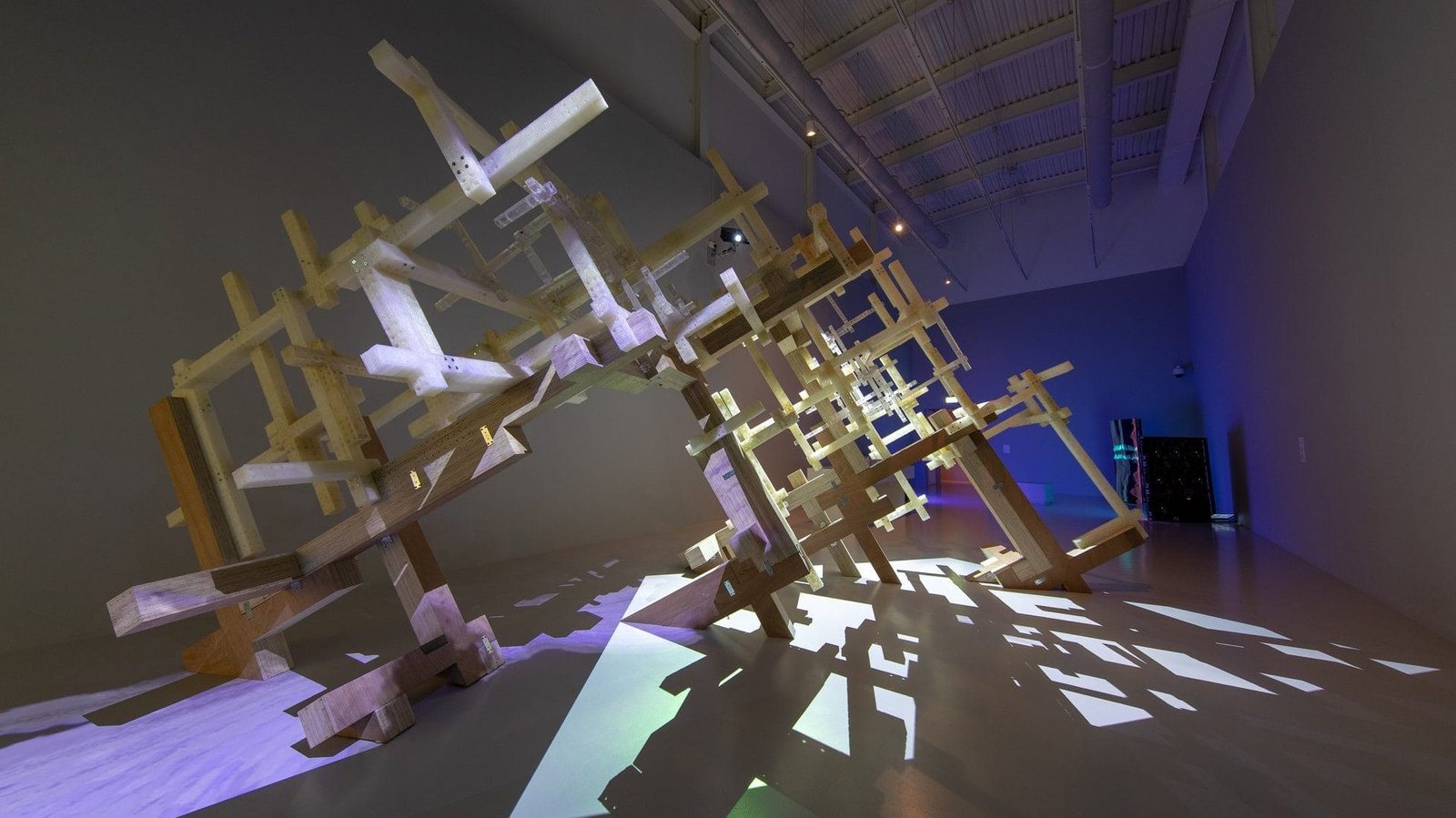
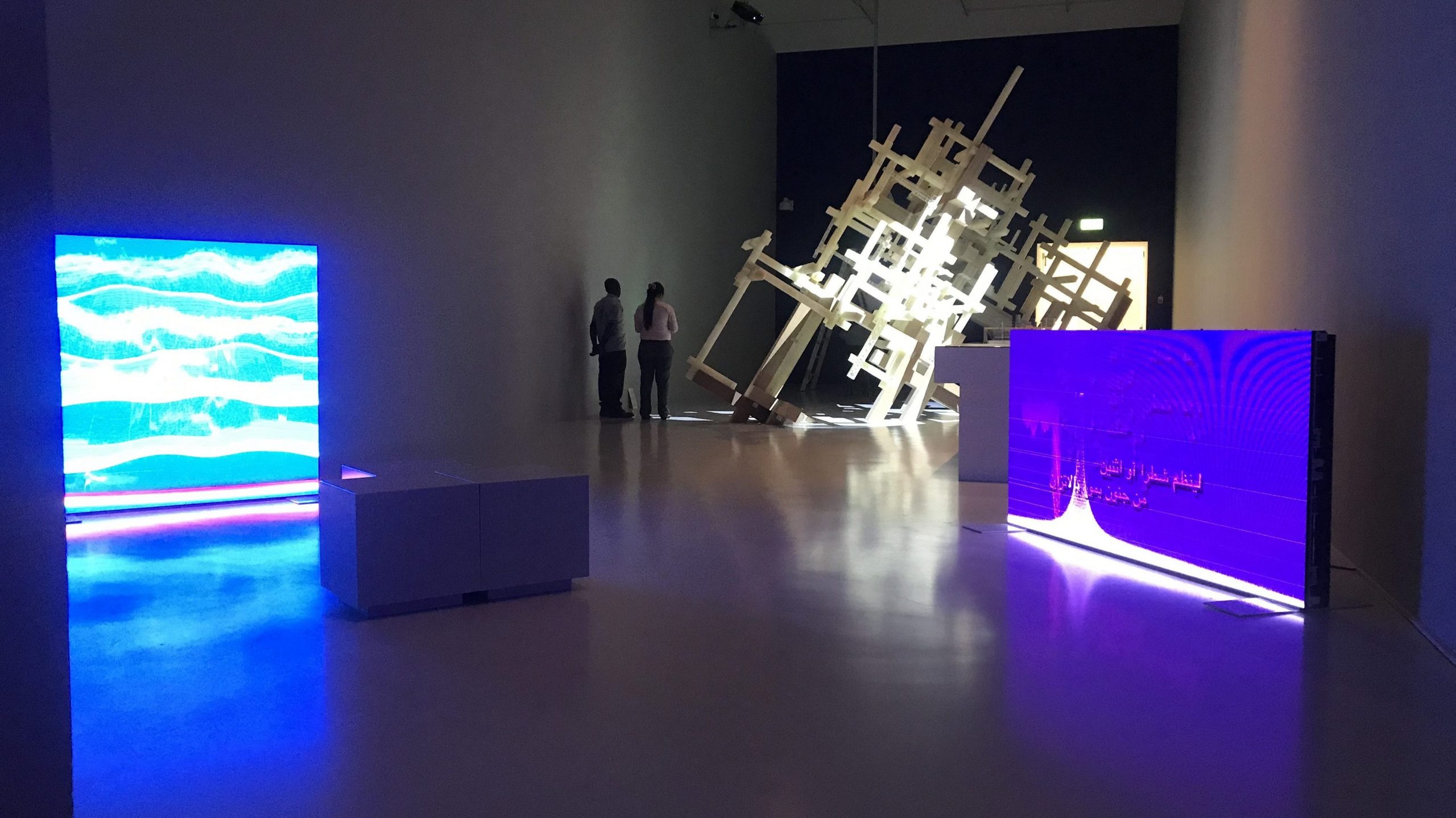
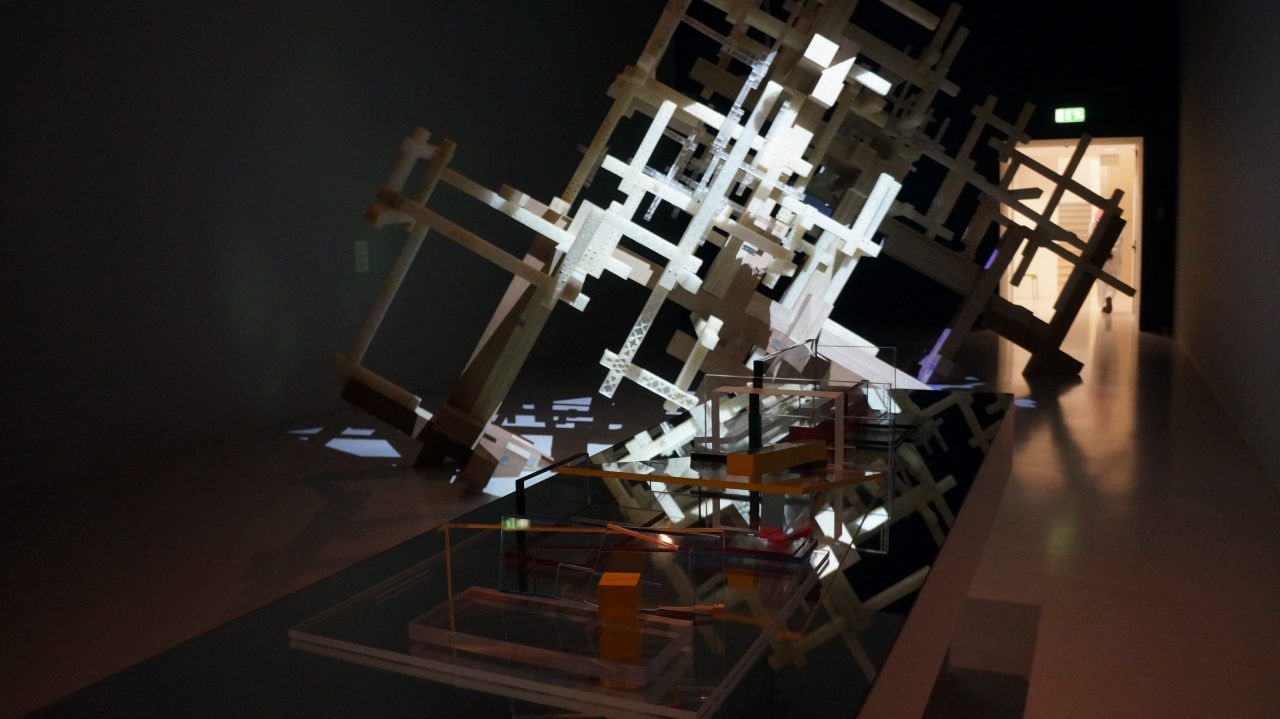
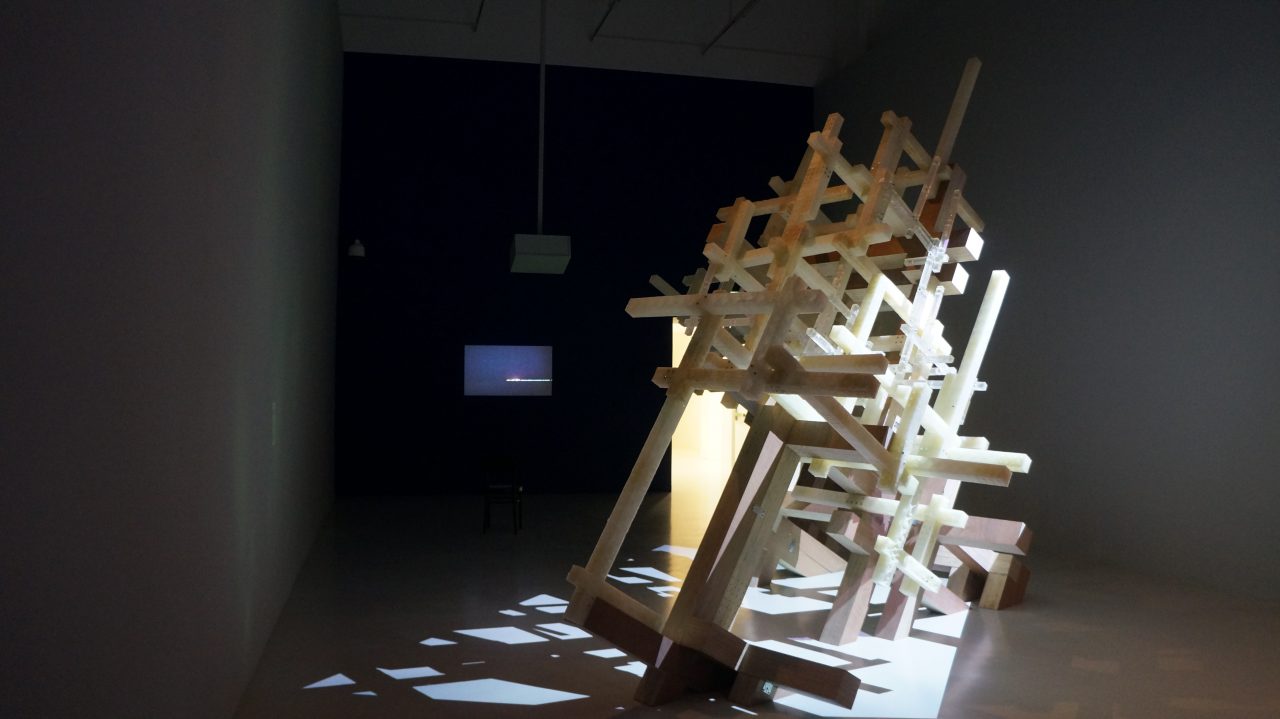
The Untold Intimacy of Digits | 2011
Looped video projection. 00:47
Art Gallery of York University, Toronto (2011); Lalit Kala Akademi, New Delhi (2011); NGMA, Delhi (2014); K21, Düsseldorf (2018)
In every sum figured by power, a remainder haunts the calculation. Not everything adds up. A people are never equal to a listing of their bodies. They are something more and something less than a population. Counting counter to the reasons of state, Raj Konai, a peasant from nineteenth century Bengal, the owner of the floating trace of a disembodied hand indexed in a distant archive, persists in his arithmetic. The handprint of Raj Konai was taken in 1858 under the orders of William Herschel – scientist, statistician, and at the time, a revenue official with the Bengal government. It was sent by Herschel to Francis Galton, a London eugenicist and pioneer of identification technologies. It is currently in the custody of the Francis Galton Collection of the University College of London. This is where the Raqs collective first encountered the image of Raj Konai’s hand. Fingerprinting experiments, and later technologies, all began with this handprint. India has now embarked on a nationwide Unique Identification Database (UID) and plans to have its billion soon counted and indexed.
To People (2019)
11 Textile and 2 Prints on paper, 100 x 500 cm each
Still More World | Mathaf | Doha
Eleven hand-woven carpets and two paper prints are hung throughout the gallery, cascading to the ground. The forms that inhabit the woven textiles represent a mass, a collective, or a network of people as an interlaced, connected weave. The work explores the meaning of the verb ‘to people’, which can suggest populating and inhabiting a space, wilfully or enforced, but can also be read as a work that is ‘for people’, referring to one person or multiple individuals.
The pixelated figures create a modular, blurred landscape of objects and human forms in transition. Together the carpets constitute one image of the nexus of people coming together in large urban cities. The work is produced for the exhibition in reference to the city of Doha and the wide networks of people who reside here.
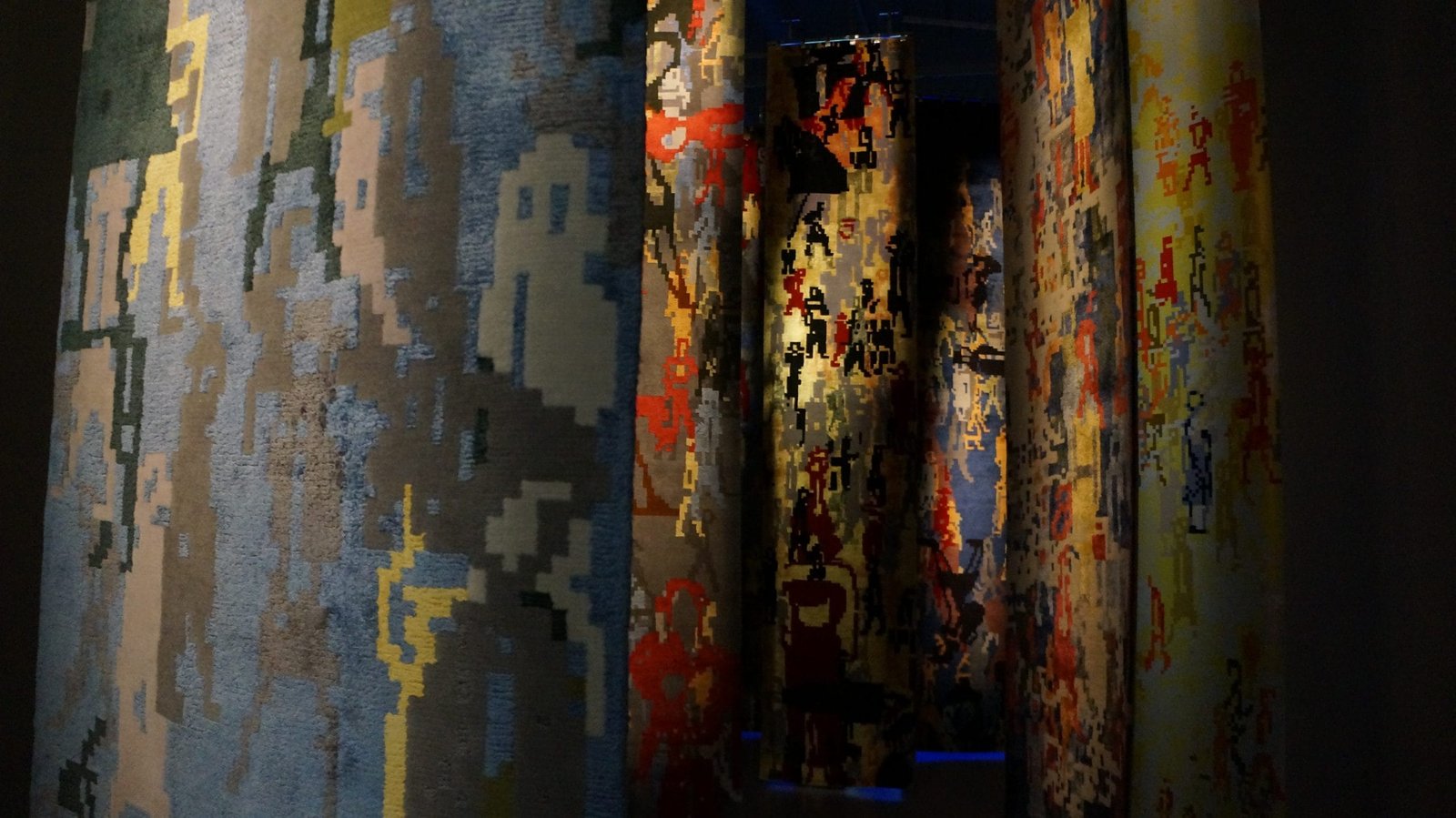
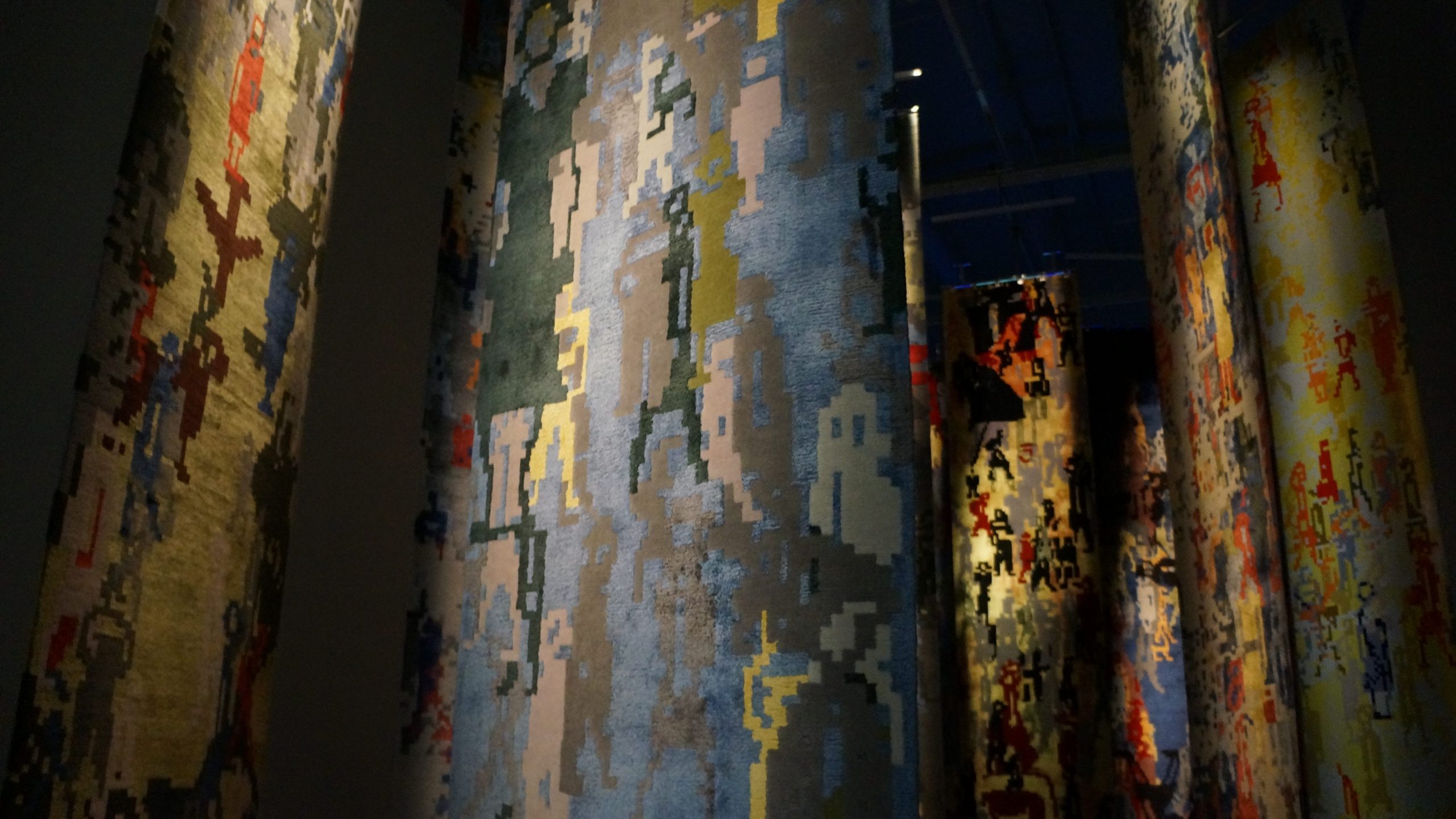
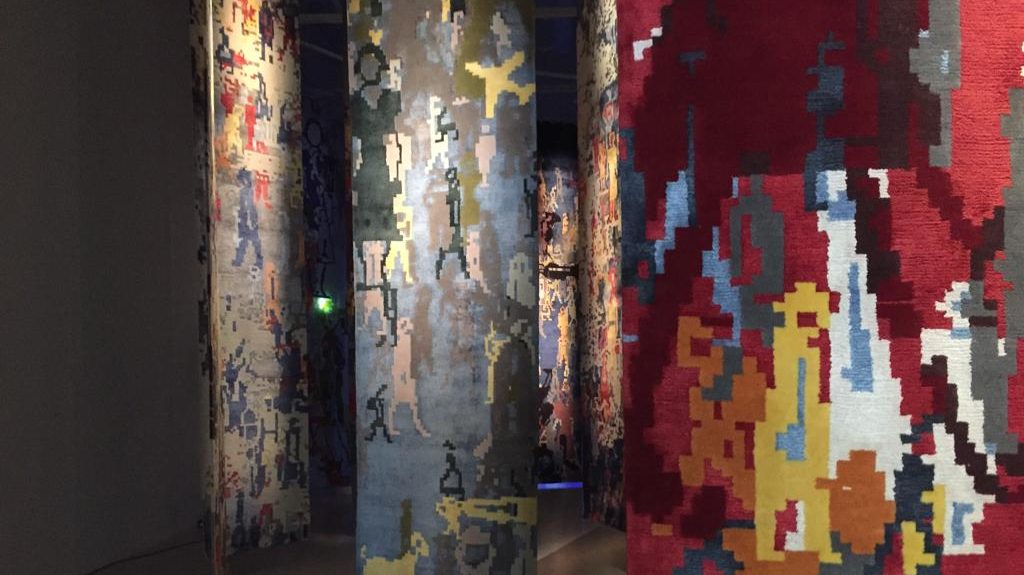
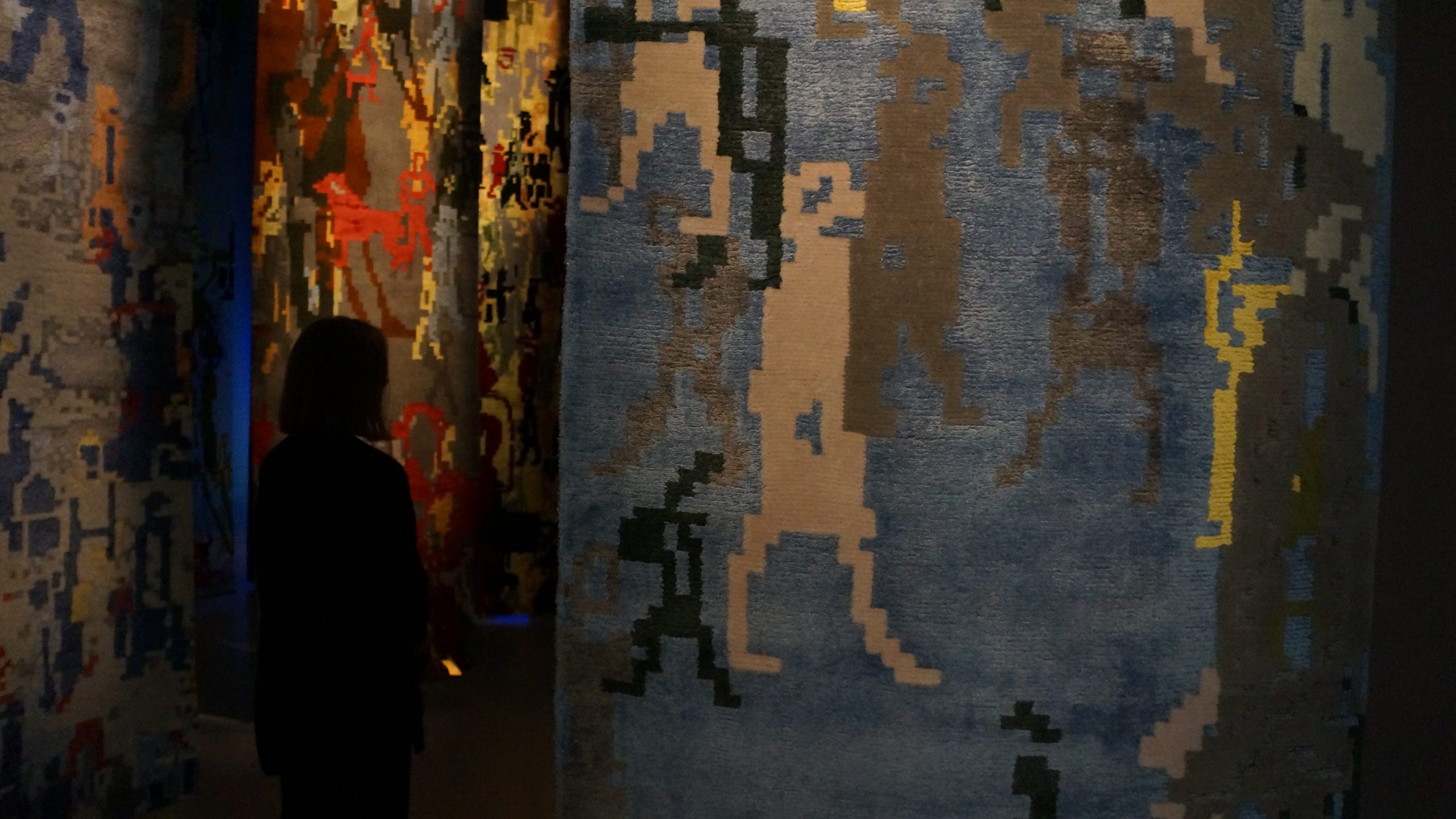
Spinal
Video, loop 10:24 minutes
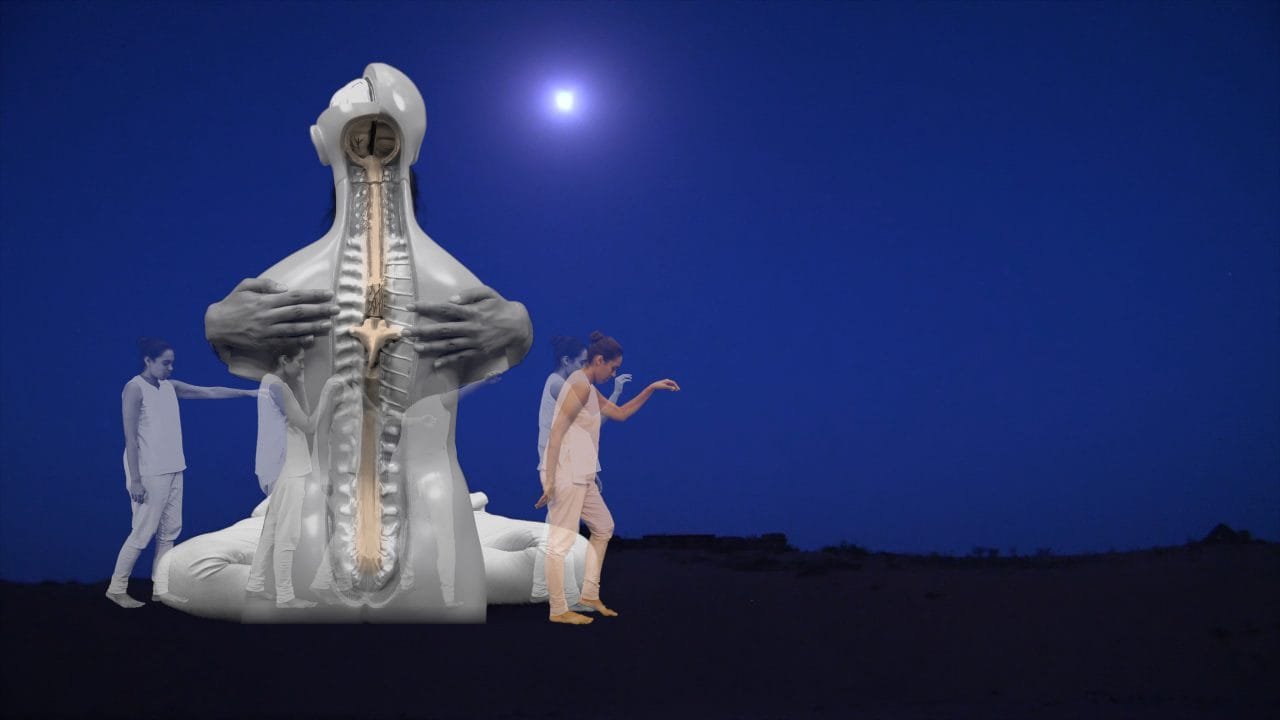
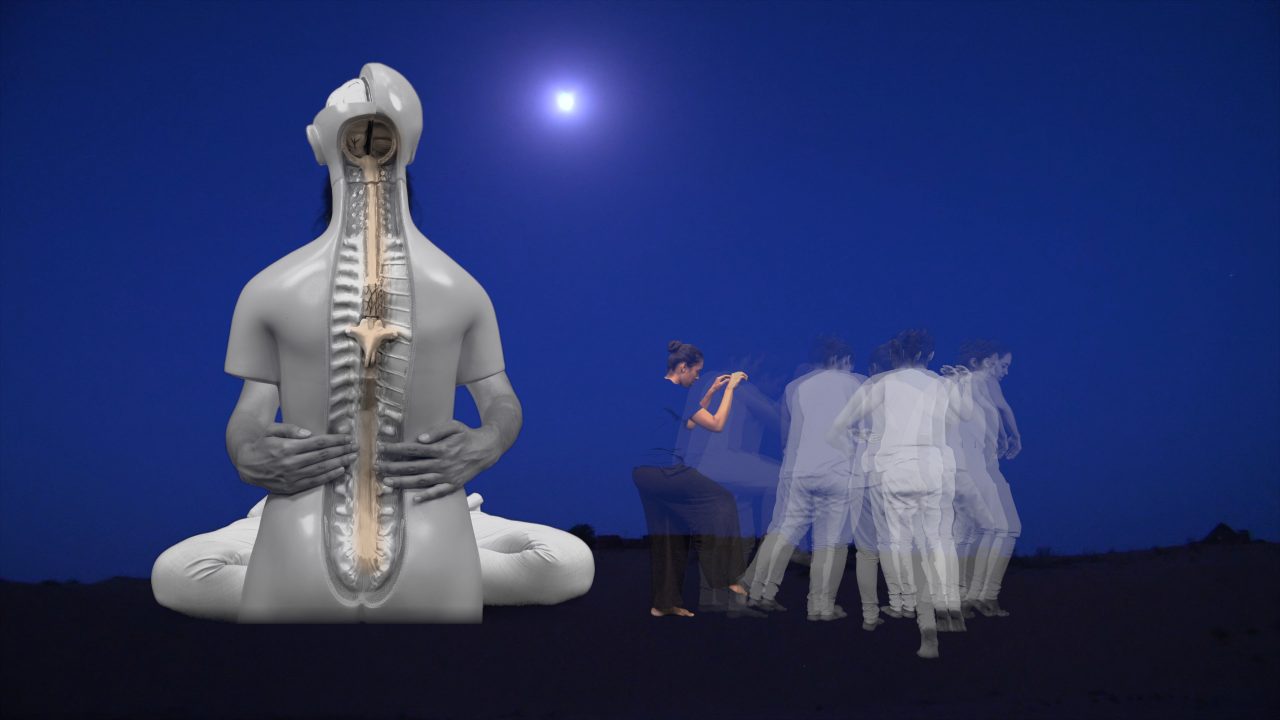
Seven Billion and One | 2015
Variations of the infinity sign in gold pigment, on pages of newspapers coated with black ink (English, Hindi, Urdu), 108 sheets of 22 x 14.5 inches
SMFA (School of the Museum of Fine Arts) | Boston
The seven billion people of the planet are animated today as they have never been before — with possibilities, propositional forms, and with an entirely new morphology and vocabulary of solidarity. There is an infinity of infinite possibilities. This takes the form of a recognition of abundance and a sense of infinite plenitude in everyday life, in a million mutinies, that translate into occurrences, co-incidences and resistances. We are in a time of kairos, not chaos — of the seizing and transformation of time.
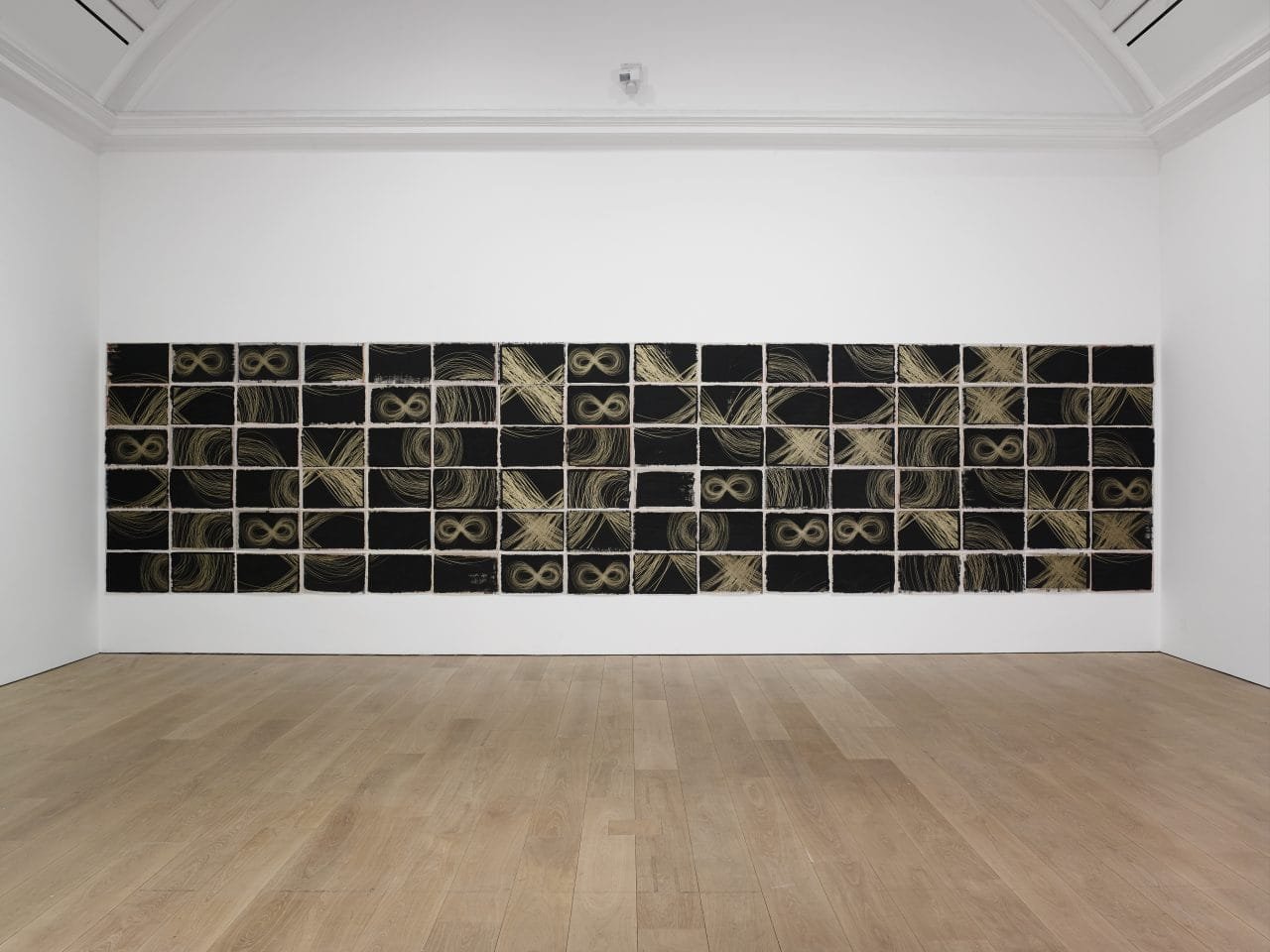
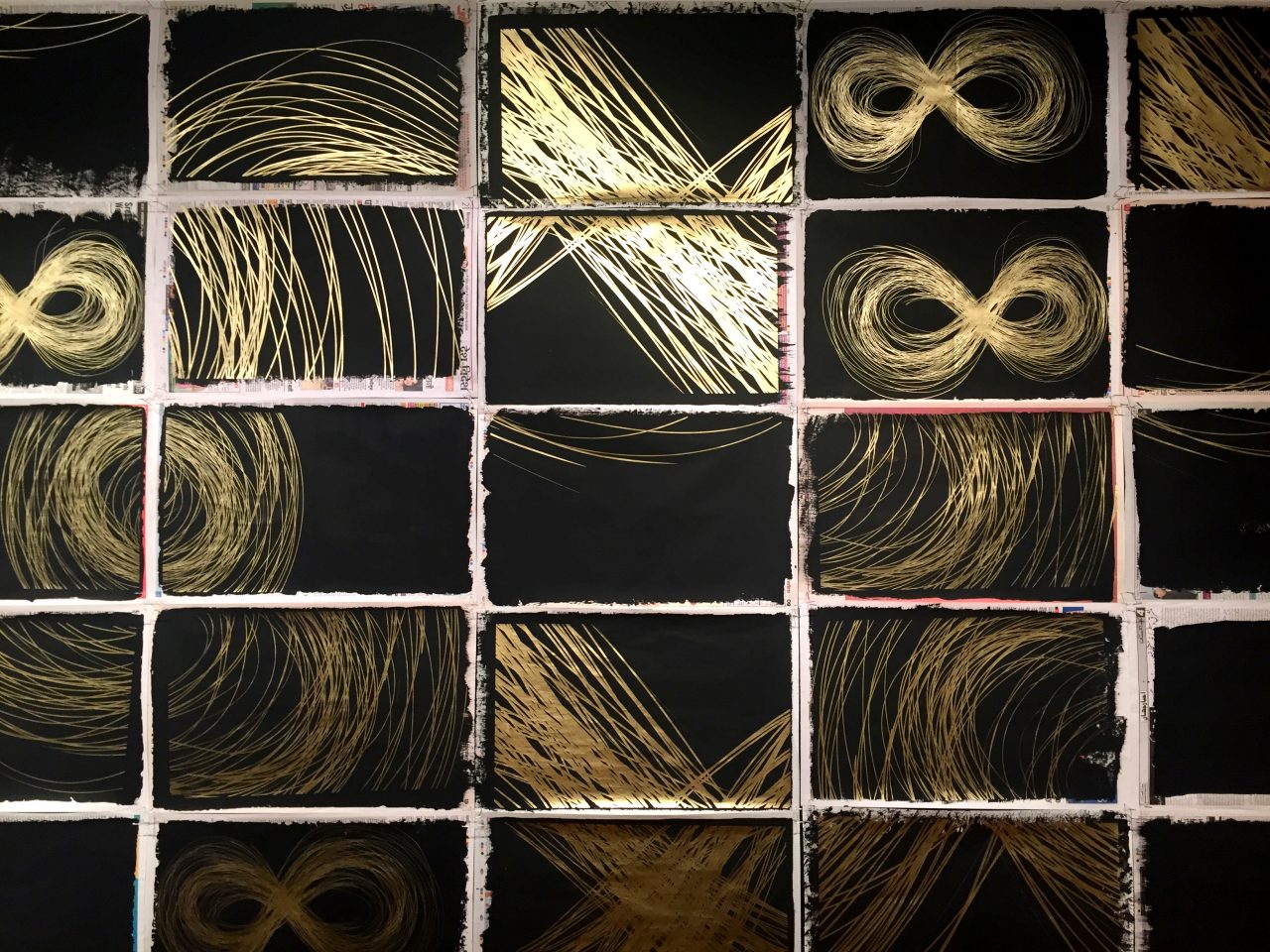
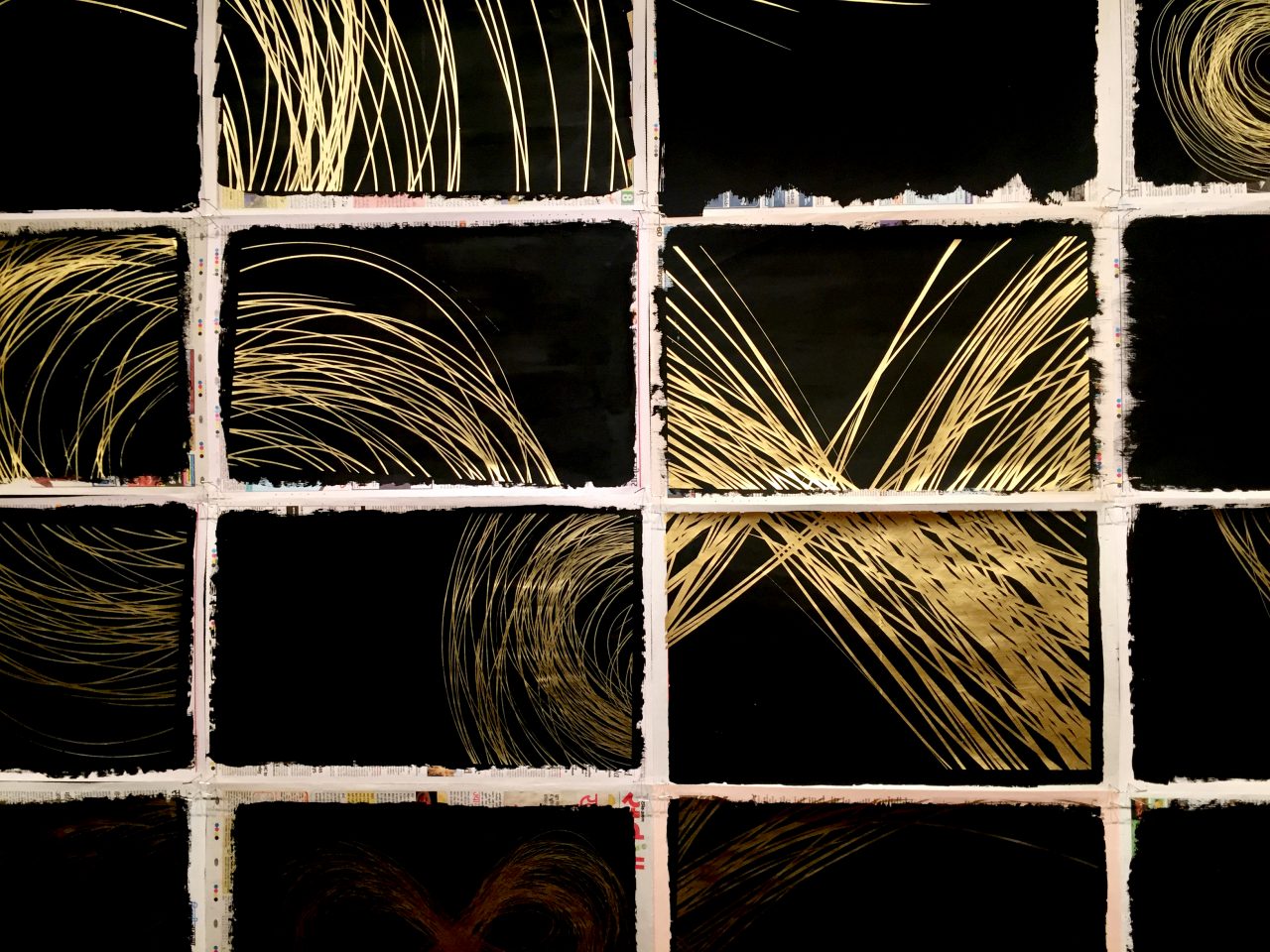
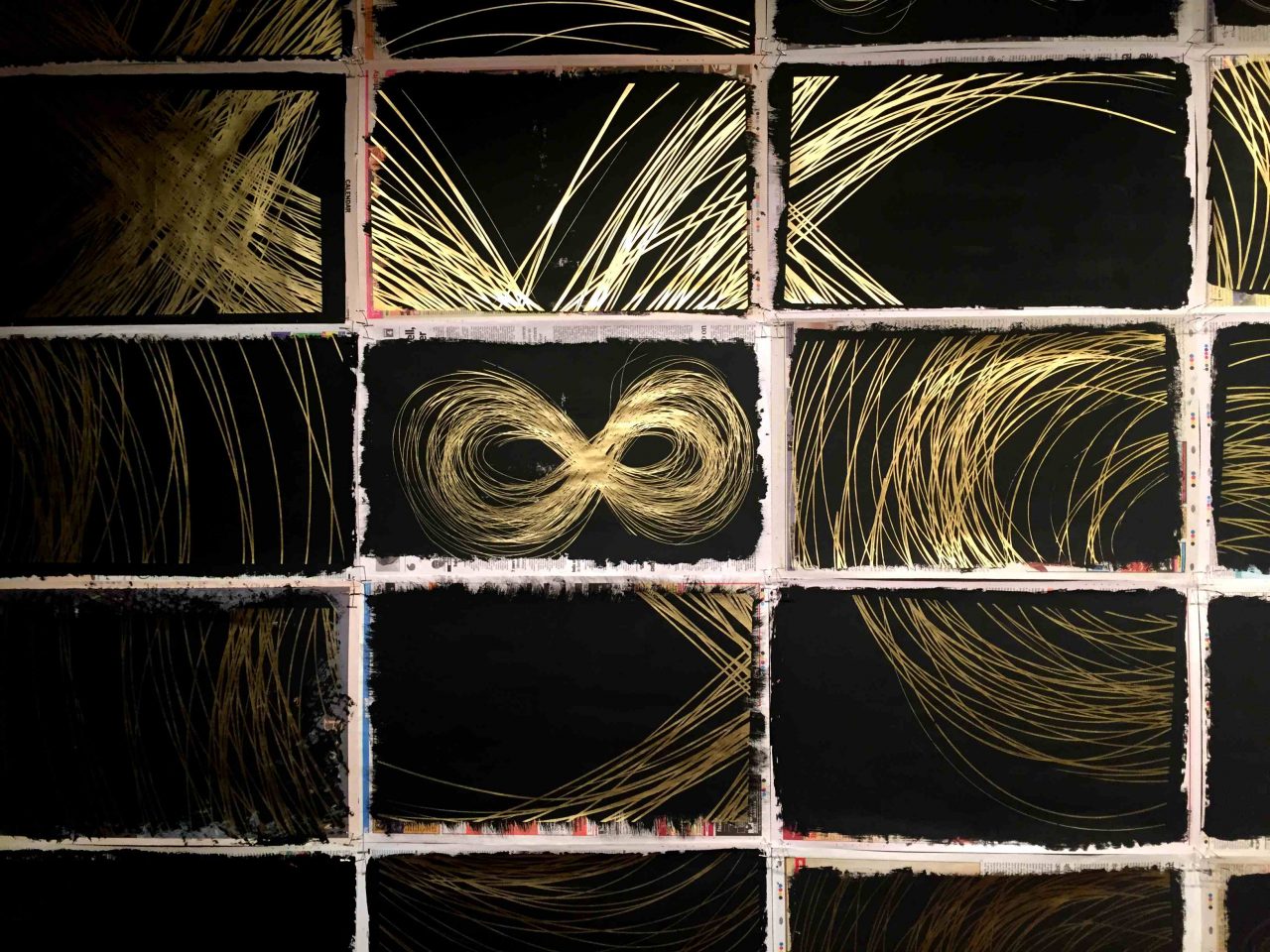
The Translator’s Silence | 2017
Three lenticular panels, 22 inches x 36.6 inches each
Fragments of texts by three South Asian poets, Faiz Ahmed Faiz, Rabindranath Tagore, and Agha Shahid Ali, are presented in Urdu, Bengali and English, in lenticular 3D prints. Faiz calls on Pakistanis to be reconciled with the creation of Bangladesh, Tagore writes about accepting the stranger, and Agha Shahid Ali reflects on how the experience of exile can become ’beloved‘ with time. Reading across the three panels evokes the moment of silence before turning to others – often strangers – to help mediate, similar to the cultural shift experienced when moving between partitions or borders.


